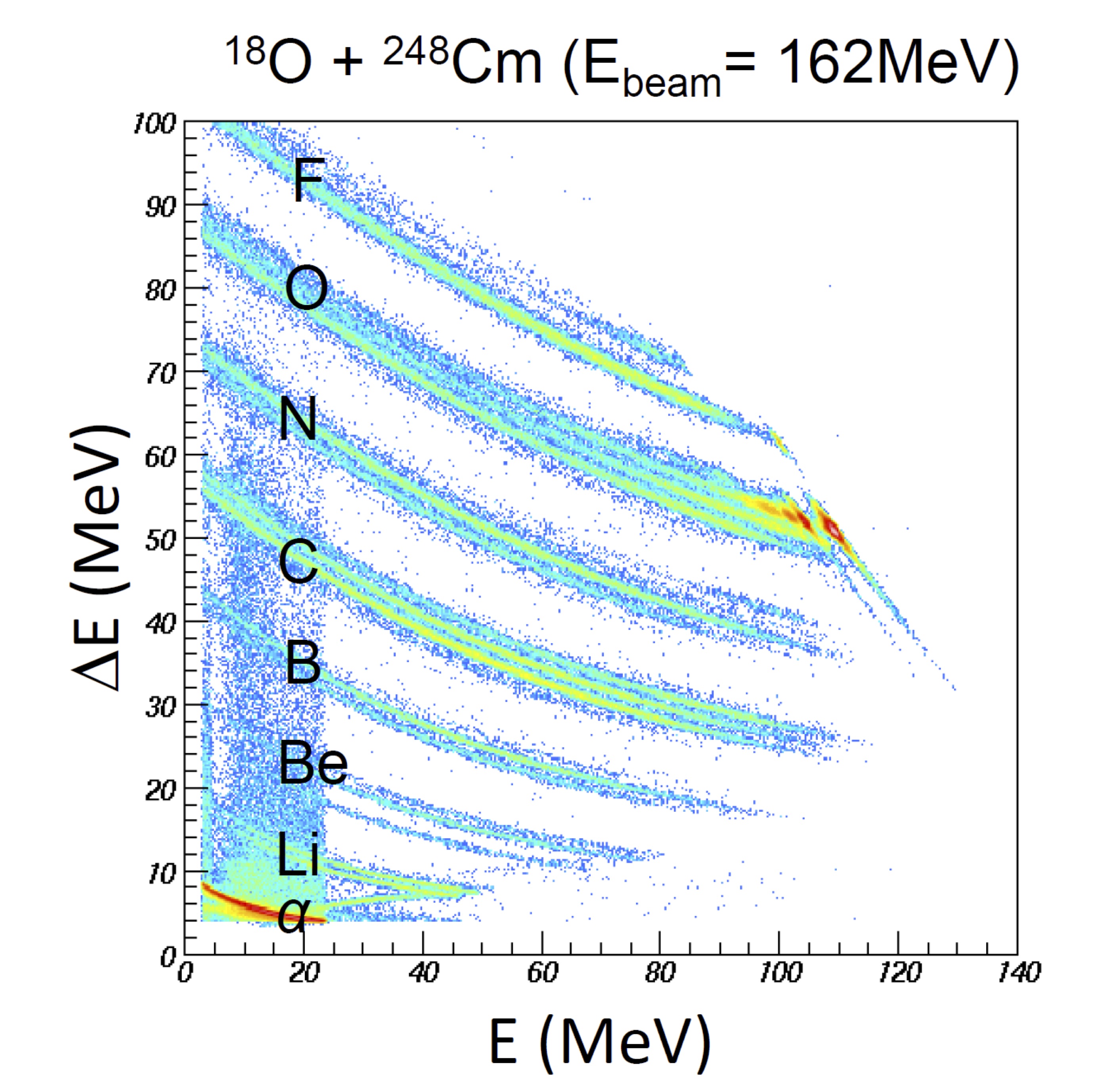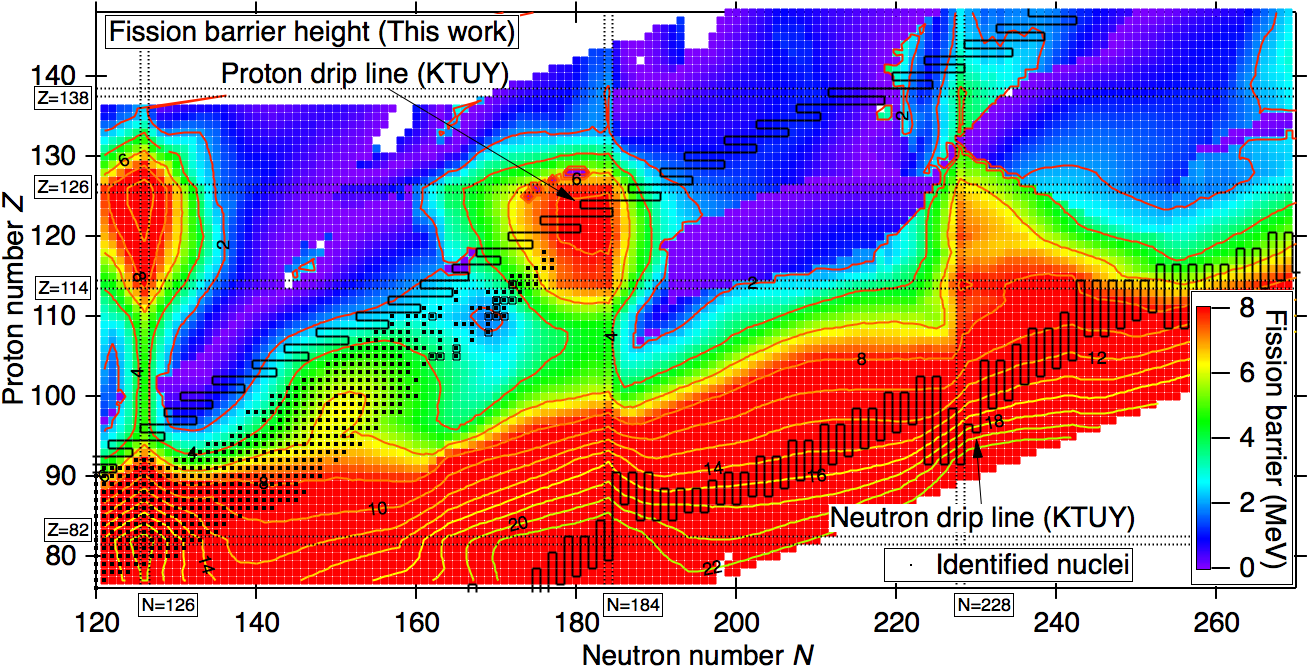It is know that actinide nuclei shows mass-asymmetric fission. Recently, we have shown that proton-rich nuclei 180Hg from low excited states also asymmetrically by generating fragments around AL/AH = 80/100. The β+-delayed fission was used to study fission [1]. The β+-delayed fission was extended to other proton-rich nuclei to see a systematic trend [2]. Excitation energy dependence of fission for 180,190Hg showed different behavior from those of actinide nuclei [3]. The results remind us that unique phenomena in fission would be found by studying nuclei far from the β-stability line. Overall trend of fission fragment mass and/or charge distributions are shown in Fig. 1.
Motivated by this finding, extending program of fission study is going to study fission of neutron-rich nuclei at the JAEA tandem facility. We are using multi-nucleon transfer reactions to populate these exotic nuclei [4]. Advantage of this reaction is that we can take data of many nuclei in one reaction experiment by identifying the transfer channels (see Fig.2). It is also found that excitation energy ranges from ground state up to several tens MeV, allowing us to observe excitation energy dependence of fission properties. Through the experiment, we can take date for fission barrier height, angular distribution of fission fragments. Correlation measurement of fission fragment and prompt neutrons are planned.

Fig.1 Char of nuclei showing fission fragment mass/charge distributions.

Fig.2 Separation of transfer channels by using silicon ΔE-E detectors in the reaction of 18O + 248Cm.

Fig.3 Calculated fission barrier height for superheavy mass region (symmetric shape).
References
[1] A. Andreyev, Phys. Rev. Lett, 105, 242502 (2010).[2] L. Ghys et al., Phys. Rev. C, 90, 041301(R) (2014).
[3] K. Nishio et al., Phys. Lett. B, 748, 89 (2015).
[4] K. Nishio et al., Physics Procedia, 64, 140 (2015).
[5] H. Koura et al., Prog. Theor. Exp. Phys., 2014, 113D02 (2014).